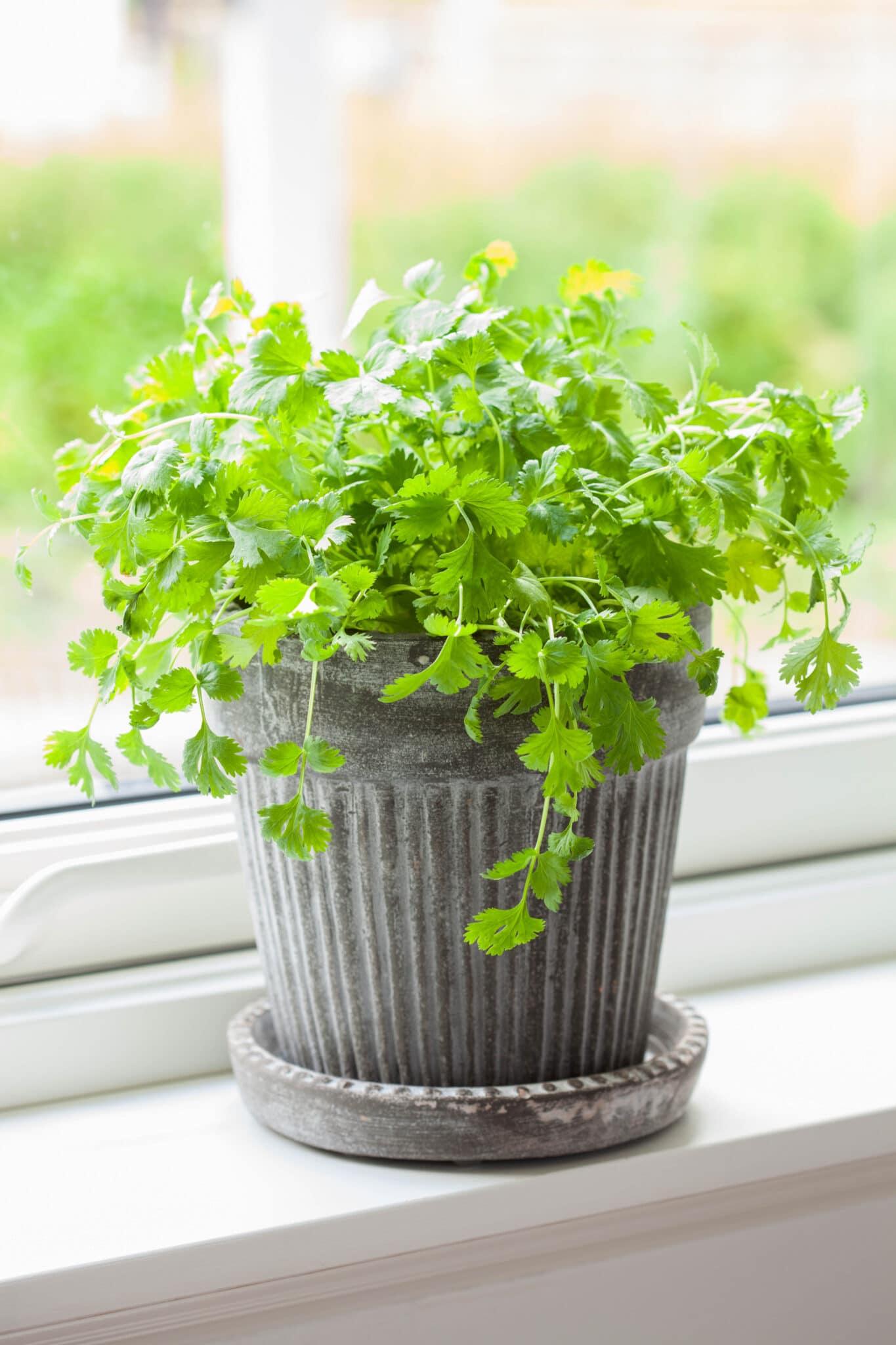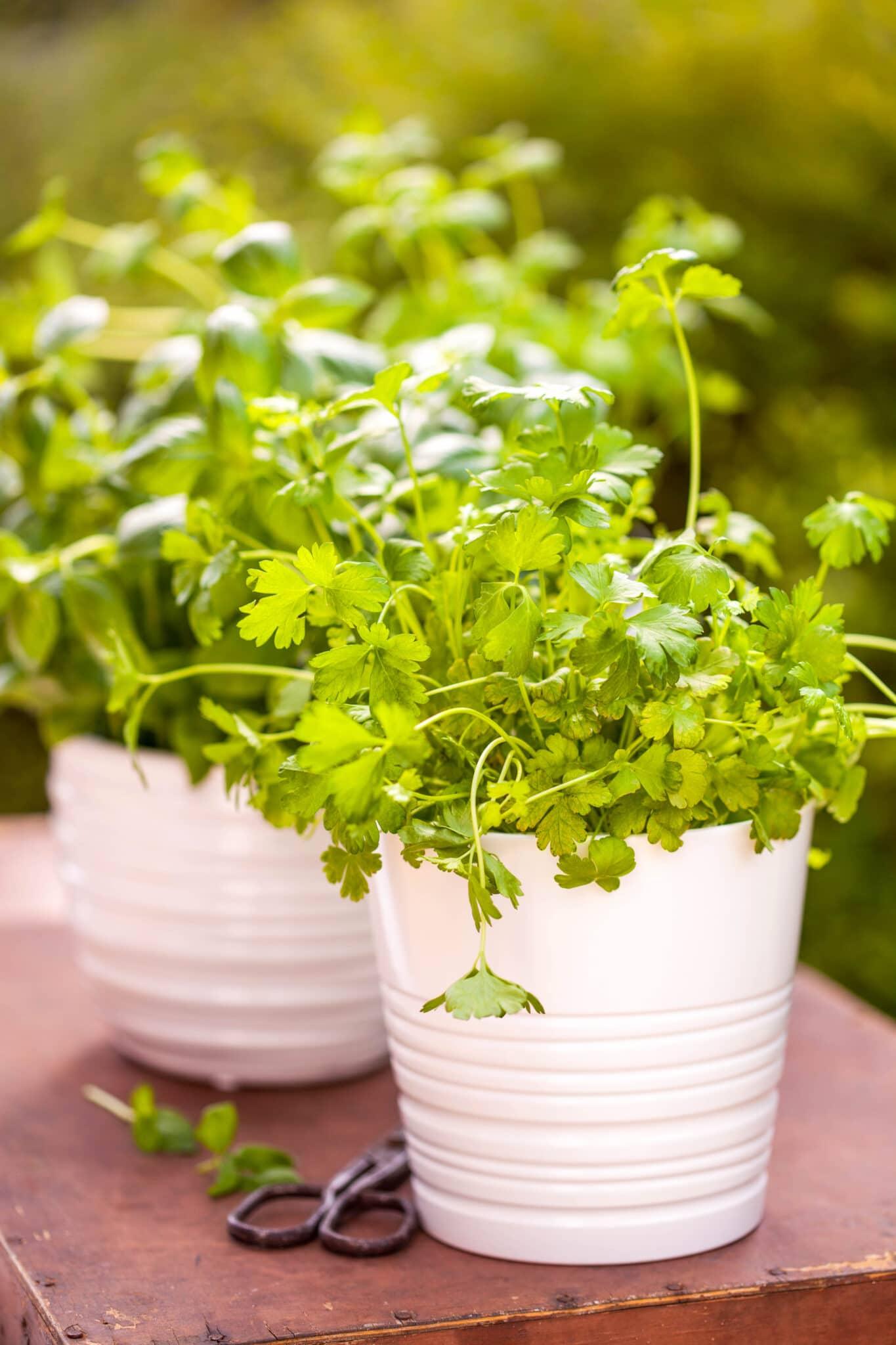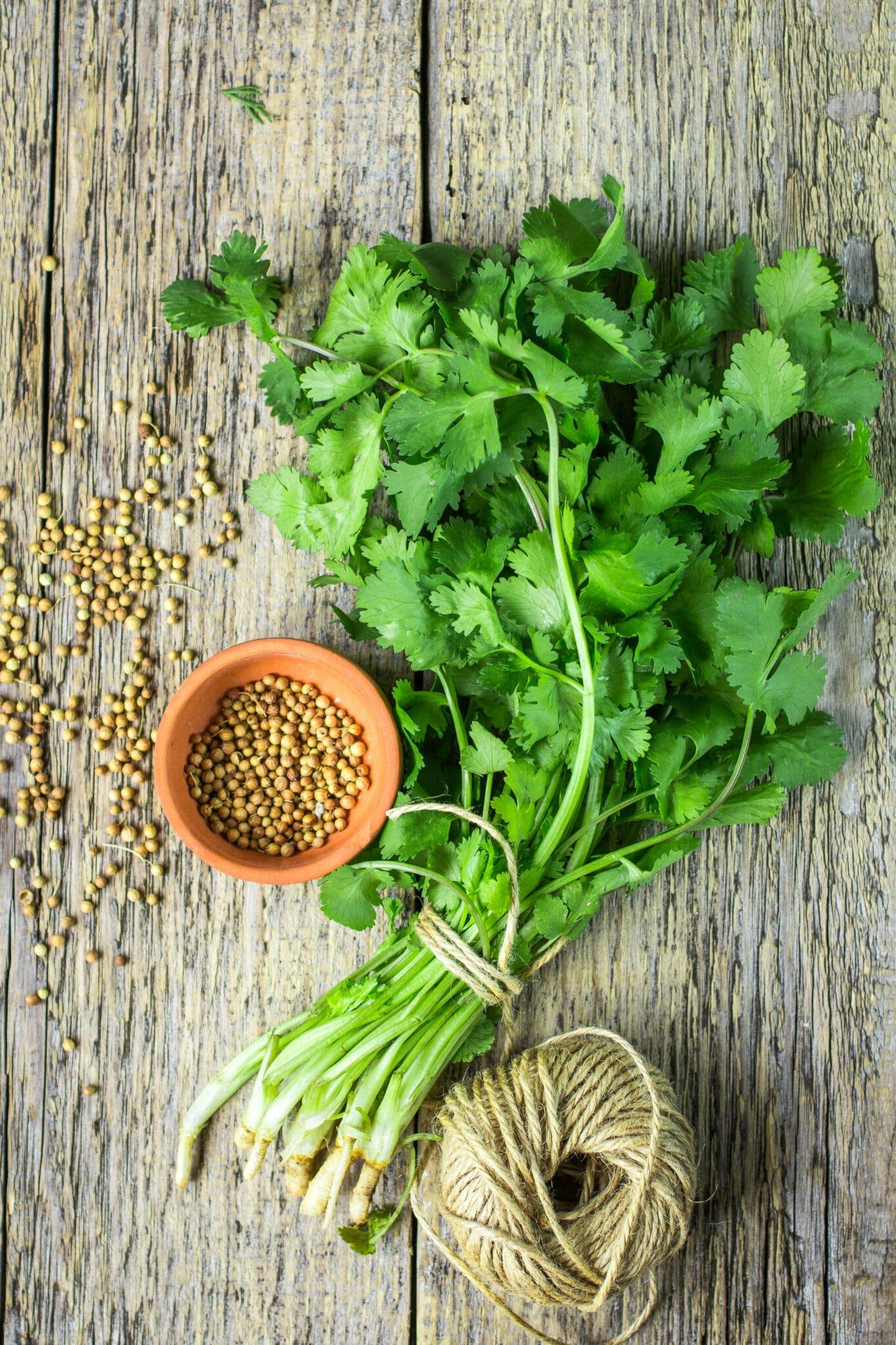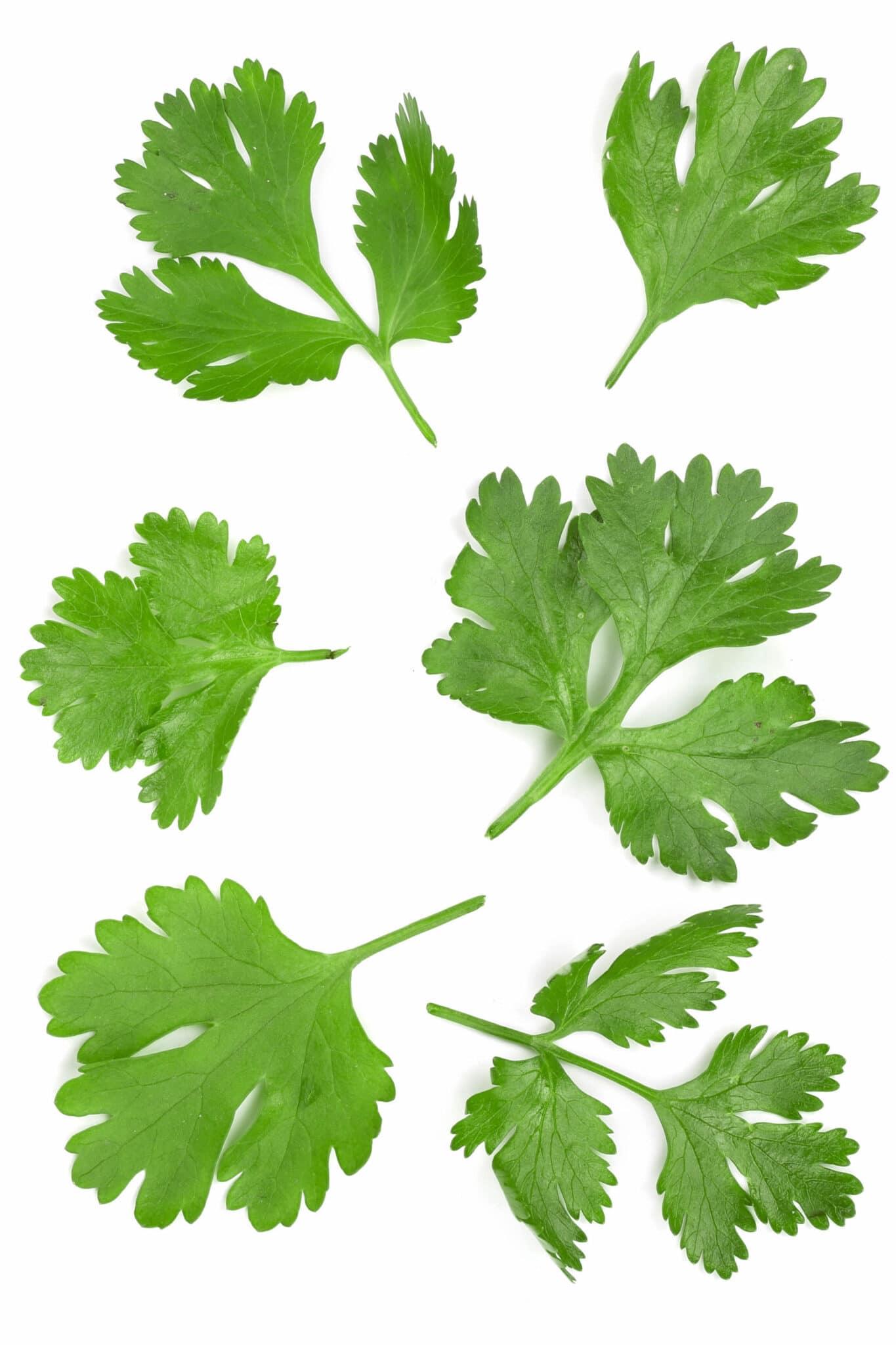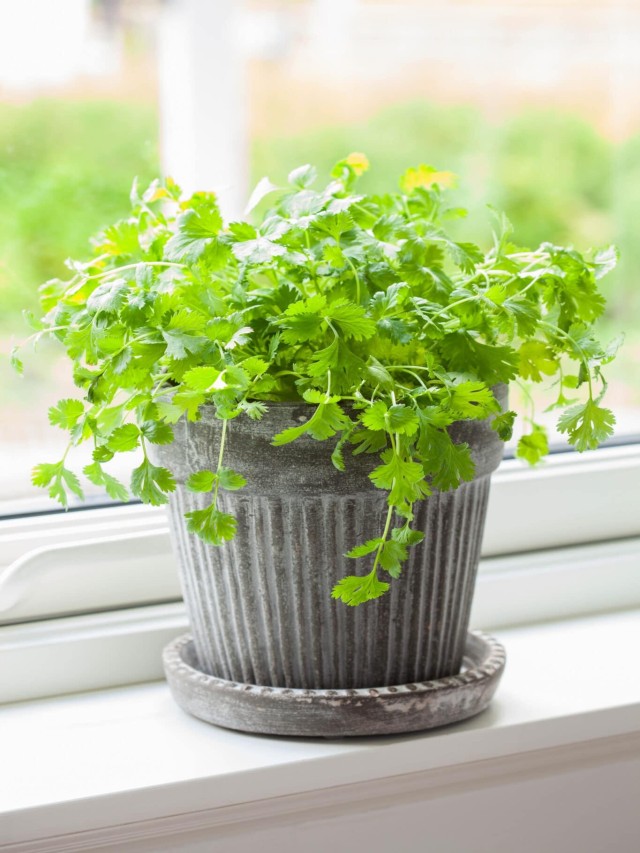Cilantro, a versatile and flavorful herb, comes in various types, each with its unique characteristics. Discover the most common cilantro varieties, learn how to cultivate them, and explore their culinary uses!
Have you ever wondered why some people adore cilantro while others can’t stand its taste? It turns out that genetics play a role. Certain individuals possess an enzyme that reacts with compounds in cilantro, resulting in an unpleasant soapy or rank flavor.
Personally, I love cilantro and incorporate it into many of my recipes. Contrary to popular belief, it’s not challenging to grow cilantro. Once you understand the basics of cultivating this herb, you can choose the specific type of cilantro to grow.
In fact, you can cultivate cilantro plants in your outdoor garden or even as part of your indoor herb garden, ideal for those residing in colder regions with short growing seasons.
Let’s explore the different varieties of cilantro so that you can make an informed decision about which type to include in your garden.
Cilantro Plant Basics
Cilantro, a bushy herb that belongs to the Apiaceae family (the same family as carrots and dill), often garners a reputation for being difficult to grow. However, here’s a secret: it’s surprisingly easy to cultivate, as long as you prevent it from bolting and going to seed.
Nevertheless, if you desire the plant to go to seed, all it needs is adequate sunlight, regular watering, and well-draining soil to thrive.
Name Confusion
One reason for cilantro’s confusing reputation lies in its various names. Internationally, it’s known as coriander leaves, while in the US (and often in Canada), it goes by the name cilantro (which is the Spanish word for coriander). At times, people also refer to it as Chinese parsley.
Moreover, the plant’s leaves are an herb, whereas the seeds are a spice called coriander. It’s enough to leave anyone’s head spinning!
But don’t worry; understanding the different cilantro varieties is much simpler than grasping its naming intricacies.
Leaf Cilantro
Leaf cilantro boasts flat, toothed leaves that closely resemble parsley. Initially, I’ve even mistaken the two while rushing through a grocery store. However, their flavors couldn’t be more distinct. While parsley has a mild taste, cilantro’s flavor is bold and vibrant.
Additionally, this herb has a strong tendency to reseed. When exposed to hot or dry conditions, the plant produces tall shoots that flower and grow seeds. Both the leaves and the seeds are edible, with the latter recognized worldwide as the spice coriander. In essence, cilantro is both an herb and a spice.
- Scientific Name: Coriandrum sativum
- Hardiness Zone: 2-11
- Light: Full sun to part shade
- Soil: Well-draining soil
- Water: Keep moist
- Flowers: White and pink-ish flowers
How to Identify Leaf Cilantro
Leaf cilantro showcases thin green stalks with flat, toothy green leaves that closely resemble parsley.
How to Grow Leaf Cilantro
Leaf cilantro flourishes in temperatures ranging from 55 to 80 degrees Fahrenheit. Plant it in full sun after the last frost, while the weather is still cool. As temperatures rise, the plant may bolt quickly. To prevent this, ensure it is adequately watered, provide some afternoon shade, and regularly harvest the leaves.
For those residing in warmer climates (zones 8 and above), consider varieties like “Long-Standing,” “Jantar,” and “Leisure,” known for their slow-bolting characteristics.
Ways to Use Leaf Cilantro
Leaf cilantro is a versatile herb suitable for various recipes, including soups, stews, dressings, rice dishes, salads, salsas, enchiladas, and even pesto! Remember to use the leaves fresh or towards the end of cooking, as they lose their flavor quickly when heated.
Different Types of Cilantro to Try Growing
Cilantro’s tangy, spicy lemon-lime flavor has made it a staple in cuisines worldwide. To experience its best flavors, harvest the leaves before the plant bolts, as mature cilantro leaves tend to become bitter.
Unlike other herbs like mint, oregano, or basil, where the variations between varieties are distinct, the differences among cilantro types are more subtle. Let’s explore the most common cilantro varieties and what makes them unique.
Delfino Cilantro
Delfino cilantro sets itself apart with its fern-like foliage, resembling its dill and carrot relatives more than parsley. This variety tends to yield a higher crop compared to others.
Moroccan Coriander
Moroccan coriander features a milder and warmer flavor, less acidic than other cilantro varieties. Its seeds add delightful citrus notes to citrus cakes, soups, chutneys, and curries.
Vietnamese Cilantro
Vietnamese cilantro thrives in hot climates. It exhibits slower bolting, pronounced flavors, and darker, narrow leaves with smooth edges, distinguishing it from parsley.
Culantro
Culantro, also known as “spiny coriander,” showcases long leaves similar to dandelions. Its bolder flavor makes it a popular choice in Caribbean and Asian cuisine, often used interchangeably with leaf cilantro. Interestingly, culantro is not true cilantro but rather a botanical cousin. It prefers shade and moisture more than leaf cilantro.
If you’re a cilantro enthusiast like me, I encourage you to try growing one of these cilantro varieties. Fresh herbs from the garden always surpass store-bought or dried alternatives.
More Gardening Inspiration
- Bay Leaf Plant: How To Grow, Harvest & Use Them
- Dill Plants: How To Grow, Harvest & Use Them
- How Weeds Grow: The Ultimate Care and Prevention Guide
- Thyme Plants: How To Grow, Harvest & Use Them
- Rosemary Plants: How To Grow, Harvest & Use Them

